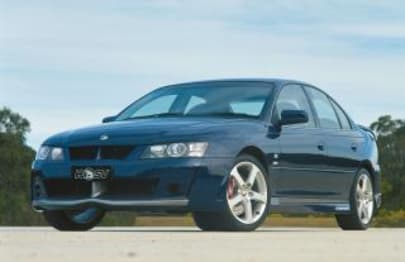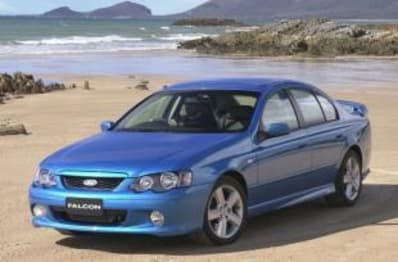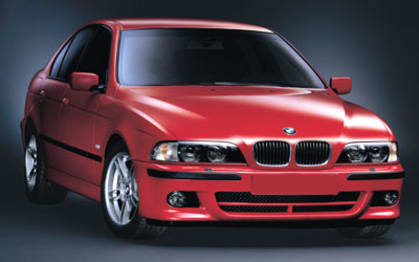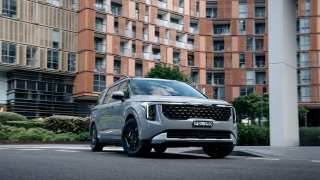
Used HSV Clubsport review: 2002-2004
- HSV Clubsport
- HSV Clubsport 2002
- HSV Clubsport 2003
- HSV Clubsport 2004
- HSV Clubsport Reviews
- HSV Reviews
- HSV Sedan Range
- Sedan
- HSV
- Used Car Reviews
- Buying tips
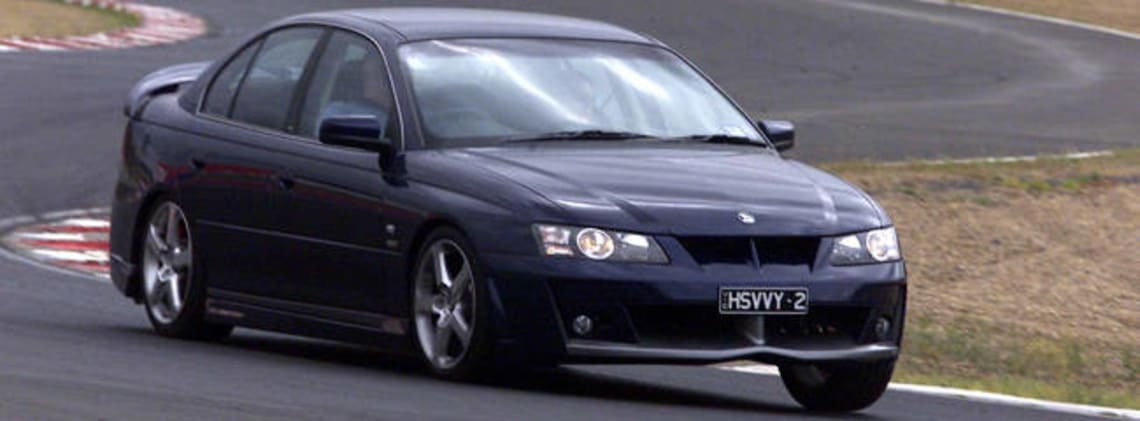
HSV had plenty to live up to when it was formed back in the late-1980s, following as it did the legacy established by Peter Brock’s HDT Special Vehicles. Brock had weaved his magic on a series of mundane Holdens and created cars deserving of the “special” tag. Brock’s cars are now very collectable and gaining in value.
Despite lacking the Brock name HSV has established its own niche in the market and has a strong following among high performance car enthusiasts. Its most prominent and popular model has been the Clubsport, a name first attached to an HSV-modified VN Commodore in 1990.
MODEL WATCH
The HSV formula was pretty simple, and well tried by many people, like Carroll Shelby and, of course, Brock, in earlier times. It started with a solid car, like a Commodore in HSV’s case, one that had plenty of potential for modification that would yield more performance without making it undrivable on a daily basis.
In fact it’s been HSV’s mantra that they build refined performance cars and the VY Clubsport was true to that concept. Words like refinement, sophistication and quality were liberally splashed around on the release for the Y Series in 2002, a clear signal of HSV’s intent.
By then HSV was aiming at buyers who were also looking at brands like BMW, Mercedes-Benz and the like, but who perhaps couldn’t quite muster the readies to make that big a step.
HSV had its own designer, although his work had to be endorsed by Holden’s design team before it could be released for production. Typically the styling enhancements were built into the easily swapped peripheral parts, like the front panel and airdam, the side skirts, rear panel and airdam and the bootlid spoiler. The addition of the kit of body bits had a dramatic effect on the Commodore’s appearance, taking it from family-friendly four-door to sports stunner.
A lower stance, courtesy of the HSV-tuned suspension, made a major contribution to the overall sports look of the Clubsport, which was further enhanced by some sharp 18-inch alloy wheels filling out the wheel arches to the maximum.
The sports theme was continued inside where the Clubsport boasted sports seats, a leather-bound steering wheel, sports dials, bright colours and sports highlights to reinforce the concept while maintaining a feeling of relative sophistication.
Under the distinctive skin lay sports shocks and springs, which produced a sporting bias and sharper turn-in. It also boasted the HSV Performance Braking package, which included larger ventilated front and rear discs, and larger front calipers.
No HSV would be complete without a big banger badge on the back denoting the improvement in power its engineers had been able to squeeze from the big-bore V8 under the bonnet.
The standard 5.7-litre LS1 V8 was boosted to 260 kW at 5600 revs and 475 Nm at 4000 revs, which made it capable of propelling the 1600 kg Clubsport from zero to 100 km/h in less than six seconds if so desired.
HSV offered the choice of a four-speed auto and a six-speed manual, and drive was through the rear wheels. ABS antiskid stoppers and traction control assisted drivers to keep the Clubsport safely on the black top.
For an even sportier ride there was the Clubsport R8 with added enhancements, particularly the improved braking from the Premium Braking package, which included larger front and rear discs, and more powerful calipers.
A year after the Y Series was released HSV updated it with a Series 2 version, which brought more power (285 kW) and torque (510 Nm), a heavy-duty four-speed auto trans, and on the R8 the Performance suspension that was previously only on the GTS model. Inside there were new seats with four-way power adjustment and new trim materials.
IN THE SHOP
The Clubsport is at the end of the day a V8 Commodore with a number of sports enhancements so it’s subject to the same shortcomings as the Commodore. The LS1 V8 suffered some piston related problems early on. They consumed oil and there was often a rattle at cold start-up, which Holden fixed by rebuilding complaint engines with new pistons. Check the records for a rebuild. If it hasn’t had a rebuild, listen carefully for piston rattle. It’s best observed just off idle by blipping the throttle when it should be clearly heard if it exists.
Rear tyre wear has always been a problem with the HSV cars, it’s a consequence of the type of independent rear suspension Holden used, and made worse by HSV’s retuned set-up. Look carefully around the body for bumps and scrapes, the lower ride height and bold body bits are a recipe for damage on kerbs etc.
IN A CRASH
The Clubsport’s chassis is one of its strongest safety weapons, with agile handling, responsive steering and powerful brakes empowering the driver with the capability of avoiding a crash. If that’s not enough there’s front and side airbags for the front seat occupants to provide a final layer of protection.
AT THE PUMP
It’s a V8, a tuned one at that, so expect to be on first name terms with your local servo proprietor in no time at all. This thing will chew through fuel like there’s no tomorrow, especially if you can’t control your right foot. Driven normally expect 13-15 L/100 km on average around town, 10-12 L/100 km when you hit the highway.
OWNERS SAY
Dean McBain’s VYII Clubsport R8 manual hasn‘t missed a beat in 72,000 km. He drives it daily to and from work and he says it not only looks the part, but is a joy to drive, comfortable with room for a family of four. The seats are brilliant, it stops exceptionally well, and it goes harder than he’s prepared to push it, and on average he gets 13.5 L/100 km around town and nine on the highway. On the downside he’s had to fix is a leaking front suspension strut and he says the original Pirelli P-Zero tyres were too soft for road use and wore out in 20,000 km.
LOOK FOR
• Sports styling
• Room for a family
• High performance
• Sports handling
• Gas guzzler
• High tyre wear
THE BOTTOM LINE
Looks good, goes hard, but it’s not for the faint hearted or inexperienced driver.
RATING
70/100
Pricing guides
Range and Specs
| Vehicle | Specs | Price* | |
|---|---|---|---|
| 15th Anniversary | 5.7L, PULP, 4 SP AUTO | $11,880 – 15,840 | 2002 HSV Clubsport 2002 15th Anniversary Pricing and Specs |
| R8 15th Anniversary | 5.7L, PULP, 6 SP MAN | $11,110 – 15,180 | 2002 HSV Clubsport 2002 R8 15th Anniversary Pricing and Specs |
| (base) | 5.7L, PULP, 4 SP AUTO | $16,500 – 21,120 | 2002 HSV Clubsport 2002 (base) Pricing and Specs |
| R8 | 5.7L, PULP, 6 SP MAN | $19,140 – 24,200 | 2002 HSV Clubsport 2002 R8 Pricing and Specs |
Other cars to consider
$11,880
Lowest price, based on third party pricing data



